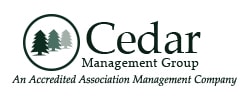There are few HOA rituals as universal as the annual meeting. This meeting, held once a year, sets the groundwork for how the entire community runs. At the HOA annual meeting, the board holds elections, sets the budget, and takes association member questions about the direction of the HOA.
With so much going on at these meetings, you can clearly see why they are critical to an association’s success. Unfortunately, without the proper preparations, so many things can go wrong along the way. Planning a successful HOA annual meeting can be tough, but it’s not impossible.
Importance of the HOA Annual Meeting
A lot of community-related matters are discussed during the homeowners association annual board meeting. The board talks about notable events that happened the previous year as well as their plans for the upcoming year. They can also announce any special assessments that might come with the new year.
If there are changes or issues that need to be voted on, they will be raised during the HOA annual board meeting. The election of new HOA board members also takes place during this meeting.
Apart from that, the HOA annual board meeting provides the opportunity to celebrate positive events or milestones that the community has experienced. Bringing everyone together is also a good opportunity to encourage relationships within the community. By providing an open forum, members can share their honest input on community matters.
The HOA annual board meeting is very important. Adequate planning and preparation are needed to have a well-attended and productive meeting.
How to Effectively Plan HOA Annual Meetings
The HOA annual meeting because it sets the tone for the coming year. For this reason, planning is of utmost importance. It makes everything much easier, and you can rest assured the meeting runs without a hitch. Not everyone knows how to plan for the HOA annual meeting, so here are some tips that can help you out:
1. Begin Planning Early
As the saying goes, “prevention is better than the cure.” Similarly, it’s better to prepare for your HOA annual meeting as early as you can instead of putting out fires as they come along. Set a date well before the meeting and make sure you have a good plan of action for the meeting proper.
In general, it’s a good idea to start planning 6-8 months in advance. This gives you and your board enough time to get everything in order. This includes finalizing an agenda and getting the word out in time. After all, you can’t expect a high attendance rate if you didn’t give the residents enough lead time in the first place.
2. Set Your Agenda
 There is a lot at stake with the HOA annual meeting. Here, you and your neighbors will determine the direction of your community and its leadership for the entire coming year. Therefore, it’s important that everyone in attendance knows what is happening and why.
There is a lot at stake with the HOA annual meeting. Here, you and your neighbors will determine the direction of your community and its leadership for the entire coming year. Therefore, it’s important that everyone in attendance knows what is happening and why.
The best way to make sure this happens is by publishing a clear agenda and sticking to it. While the exact items will vary from association to association, it’s common to at least include time for:
- Reports from the board of directors (including financial reports)
- Upcoming projects
- Ballot items
- Board nominees
- A time to vote
- Q&A (member comments)
Great associations plan and agree on the agenda well in advance of the meeting. That way, everyone attending will know what to expect and have ample time to gather any documents or other materials they may need. As stated above, it’s good practice to plan your HOA annual meeting 6-8 months prior. When it comes to your agenda, it’s recommended to settle on a final one at least 30 days before the meeting.
3. Educate Early
Since the HOA annual meeting tackles a lot of issues — including board elections — residents must be aware of all matters. This is also why it’s important to set an agenda early on, so attendees know what they can expect from the meeting.
Informing residents of all necessary information helps meetings go smoothly. It becomes even more vital if there’s a hot-button issue that warrants a discussion. The definition of a hot-button issue can vary from community to community. What may be a hot-button issue to one association may not be any cause for alarm to another. Know your audience well.
4. Know When You Meet
It should go without saying that the HOA annual meeting needs to have a date. Luckily, finding that date is usually already done for you. In most community associations, an HOA’s governing documents contain provisions for the date of the annual meeting.
If it’s not given as a specific date, it will be specified as “The first Tuesday of April” or something similar. Because so much happens at this meeting, it’s important to have as much of the community involved as possible. Having the date determined well ahead of time lets you plan around it and get the word out early to maximize attendance.
Once you’ve set the date of the HOA annual meeting, have plans to remind members that the event is coming up. You can do these months, weeks, and days ahead time. Detail the meeting in your HOA newsletter, put up flyers on notice boards, and mail out postcards before the date of the meeting. You can also advertise the HOA meeting on your community’s social media accounts.
5. Plan the Meeting Around an Event
 Most HOAs have trouble keeping attendance up at annual meetings. This doesn’t come as a surprise at all, especially given that most residents have a preconceived notion that meetings are dull and boring.
Most HOAs have trouble keeping attendance up at annual meetings. This doesn’t come as a surprise at all, especially given that most residents have a preconceived notion that meetings are dull and boring.
To counteract this, consider planning your HOA annual meeting around an event. Parties make everything seem lighter and more fun, encouraging more people to attend.
Of course, not all associations have the luxury to make a big deal out of HOA annual meetings. You can’t rent out a venue and hire a caterer if you can’t afford it. When you’re on a tight budget, a simple meal at a local restaurant or free pizza and drinks can go a long way. By adding a little extra oomph to your HOA annual meeting, residents can look forward to it.
6. Provide Incentives
These don’t have to be anything big — maybe just a special announcement that will be made or a speaker to talk about some of the issues your association is currently facing.
Another option is having a draw or raffle open to only those who attend. The chance to win big-ticket items can encourage a lot of members to show up for the HOA annual board meeting.
If you plan to provide incentives, make sure it is something that your members want or appreciate. There are some that may not look kindly on the community allocating funds for these incentives.
7. Introduce the HOA Board
Not all members are active in the community and thus, they might not know their HOA board. During the HOA meeting, you have the opportunity to introduce the individuals who have been elected to the board.
Begin the meeting with short introductions of each board member. This helps establish familiarity and order during the meeting. It can also foster better connections with the community and lead to better engagement from the members. It will also be helpful if you can give a brief description of the roles and responsibilities of each board member. This way, homeowners know who to talk to when a concern arises.
8. Understand Quorum and Proxies
Regardless of the rest of your agenda, the election of the board of directors is central to the HOA annual meeting. Big decisions like this require a quorum. Don’t be scared off by the fancy Latin name, though. A quorum is simply the minimum number of votes required for a vote to “count.”
This amount can usually be found in your association’s governing documents as a percentage of total eligible voters. Typically, this is 10% for general meetings like the annual meeting and 50% for board meetings. Business can’t be conducted and the meeting must be rescheduled if a quorum isn’t present.
Luckily, you don’t need to have all these eligible voters physically present at the meeting. To achieve this, many associations use proxies. A proxy is a document that allows one association member to vote on behalf of another. It’s important that this document is set up properly to avoid any confusion or legal challenges. It’s a good idea to work with a lawyer or your association management company’s legal advisors to set them up properly.
9. Notify Residents Early and Often
Even if your community uses proxies, you should do everything you can to get your members to attend the meeting in person. In-person attendees are able to be more active participants, asking questions, and hearing the discussion being had first-hand.
The best way to boost attendance is to let members know about the meeting early. That way, they can block off that time on their calendar before anything else comes up. Often, the notice period will be specified by your community’s governing documents. If not, we recommend sending notice 30 to 60 days ahead of the meeting via email blast or paper mailers.
If your community has a regular newsletter, the date should also be prominently displayed in each issue, especially as the date approaches. You can also get the word out through social media posts to groups on Facebook, NextDoor, and others. And if all else fails, promising food or some attractive community event is a great way to entice people to come out.
10. Consider a Suggestion Box

People have a lot of opinions, and the HOA board of directors simply can’t address them all in one go. These discussions — and sometimes unnecessary comments — can prolong the meeting.
To combat this, consider installing a suggestion box. You may think it’s tacky, but suggestion boxes actually improve HOA annual meetings. Whenever someone brings up an issue outside of the agenda, the HOA board can simply redirect them to the suggestion box.
However, that doesn’t mean the board can ignore the contents of the suggestion box. By no means is it just a way to pacify opinionated residents. Make sure to read through them all. Who knows? You may be surprised to find useful information.
11. Lean On Your Community Manager
Communities working with an association management company have a major resource in their community manager. The community manager is paid to take a lot of administrative burden off of the board.
In planning an annual meeting, they can review meeting agendas and give advice on what should and should not be included. They can also handle much of the communications with homeowners through scheduled email and physical reminders. For medium-to-large communities, a good community manager goes a long way toward getting annual meetings run smoothly.
HOA Annual Meeting Mistakes You Must Avoid
With so many moving parts, it’s normal to commit mistakes when you’re planning an HOA annual meeting. While some mistakes are excusable and easily repaired, others can be detrimental. Foresight can save you a ton of problems (and headaches, too). Here are some of the most common mistakes you must avoid:
1. Not Setting Up a Timeline
After setting a date for your HOA annual meeting, it’s important to plot your timeline. Since the date is usually a long way away, give you and your HOA board ample time to make preparations.
Start from the date of the meeting and work your way backward. Determine when you must finalize your agenda and when notices must go out. By working with a timeline, you allow yourself enough room to breathe and won’t miss deadlines to boot.
2. Not Checking Your State’s Requirements
 Some states have laws in place concerning HOA meetings. For instance, in California, Corporations Code §7511 states that written notice must be supplied no less than 10 days or more than 90 days prior to the date of the meeting.
Some states have laws in place concerning HOA meetings. For instance, in California, Corporations Code §7511 states that written notice must be supplied no less than 10 days or more than 90 days prior to the date of the meeting.
Failure to comply with the laws of the land — be it federal, state, or local — opens your board up to legal liability. As such, HOA boards must do their due diligence and familiarize themselves with these laws.
3. Failing to Take Notes
The minutes of the meeting are very important to an HOA. They are physical records of what took place at every meeting. They are something you can look back to for reference in case of any misunderstandings down the road. The minutes are made all the more significant when it comes to the HOA annual meeting, where so many issues are tackled.
Among the board of directors, it’s the secretary’s job to take minutes of every meeting. If they are absent or occupied for any reason, appoint someone else to take on the task. A copy of the minutes must then be sent to each homeowner. This way, those who failed to attend the meeting can catch up on what they missed.
The Bottom Line
As you can see, a lot goes on at every HOA annual meeting. It’s a jam-packed event that demands sufficient planning and forethought. By giving yourself enough time, you can make arrangements, finalize your agenda, and notify residents with ease. Furthermore, avoiding common mistakes can eliminate potential setbacks. When it comes down to it, preparation is key.
If you still find yourself struggling with planning or just don’t have the time to do it, consider consulting a professional. This is where we come in. Don’t hesitate to give us a call should you need help.
RELATED ARTICLES:
- Is Your HOA Board Meeting Agenda Good To Go?
- What To Include In Your HOA Meeting Minutes
- How to Prepare For Your Annual HOA Board Meeting






